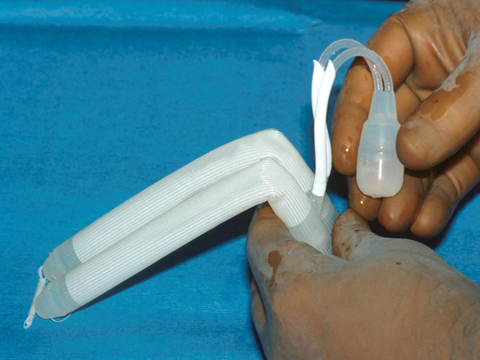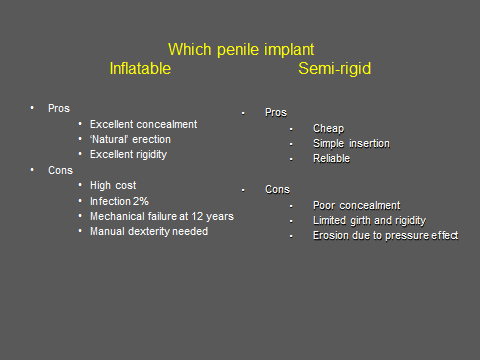Types of penile prostheses
Coloplast Corporation and American Medical Systems (AMS) produce the most widely used penile prostheses. Both companies produce inflatable and malleable penile prosthesis.
A malleable prosthesis gives a semirigid erection at all times. The penis is maneuvered into position for intercourse and bent either alongside the inner thigh or under the trouser belt for concelement when not needed.
An inflatable prosthesis involves the transfer of fluid into the penis when an erection is desired, and then back into a reservoir when a flaccid penis is needed. In a 3 piece device, the fluid is stored in the reservoir which is hidden in the pelvis. By squeezing the pump that is within the scrotum, fluid is then transferred into the cylinders within the penis to become erect. Once finished, a release button on the pump is pressed to allow the fluid to return to the resevoir and deflate the penis.
In general, young and physically active patients with good dexterity and a larger penis are better served with 3 piece inflatable penile prosthesis, since this type of device allows excellent girth expansion and rigidity and during deflation allows the penis to be easily concealed. On the other hand, in older patients, where concealment of the penis is not an issue and poor dexterity is more common, a malleable penile prosthesis might be the better choice.
A 2 piece device is also available which has a mixture of attributed and is reserved for those who have had extensive abdominal surgery to avoid the placement of a reservoir.

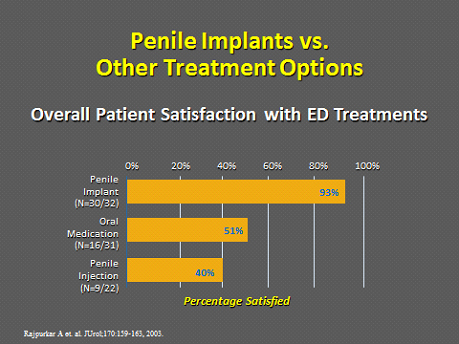
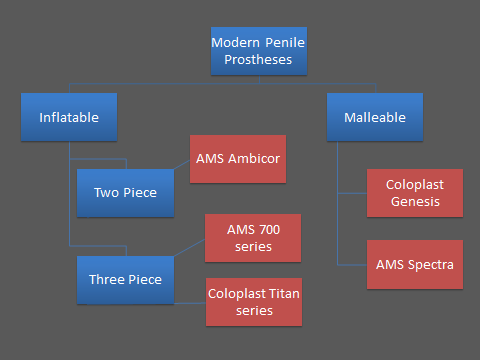
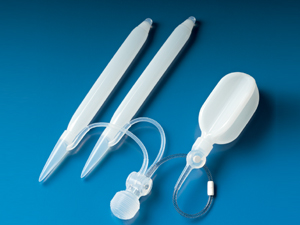 Coloplast Titan Touch
Coloplast Titan Touch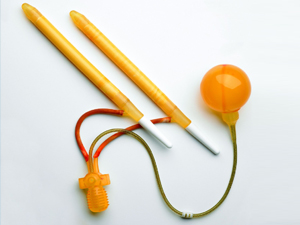 AMS 700 series
AMS 700 series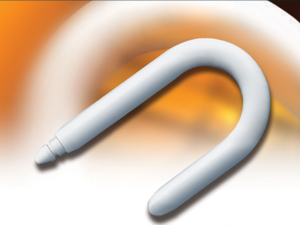 The AMS Spectra
The AMS Spectra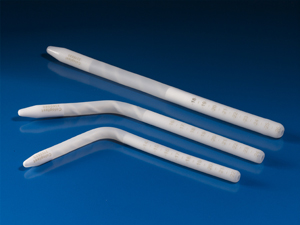 The Coloplast Genesis
The Coloplast Genesis